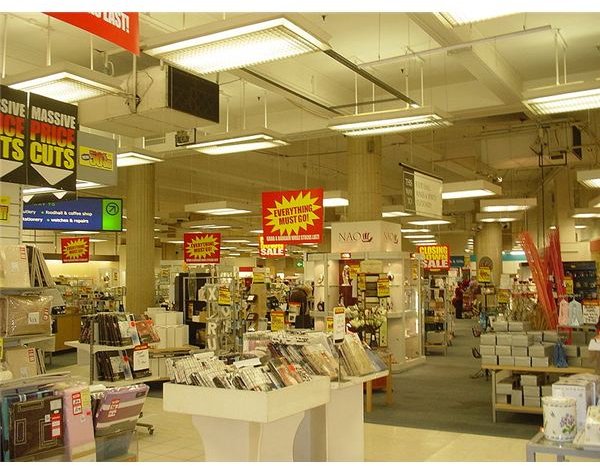Analyzing Gross Margin Calculation: Examples and Explanations, Part 1
The Uses of Gross Margin Percentage
In today’s current business trends, you don’t have to wait for the final outcome of a business operation before taking any actions. Performing a gross margin calculation is one way of knowing whether or not your business is faring favorably. If it isn’t, you can take a proactive stance by reviewing the related factors affecting your profits and those that will be affected by your poor gross profit showing.
In a separate article entitled What is the Gross Margin Formula? the significance of performing gross margin calculations were discussed. The use of this calculation at the earliest time possible can give you leads to where your business seems to be headed. In addition, you can make future projections by using a gross margin percentage as your profitability index.
The following sections are examples and explanations of a gross profit calculation and the remedies to consider, in appreciating the full significance of this accounting tool:
How to Use the Gross Margin Percentage
Givens:
1st Quarter
Gross Revenue (GR) - $50,000; Cost of Goods Sold (COGS) - $10,000;
Operating Expenses: Fixed Costs - $26,000; Variable Costs - $10,000
Total Operating Expenses (TOE) - $36,000
Gross Margin Calculation:
Gross Margin % = (GR $50,000 - COGS $10,000)/ GR $50,000
= $40,000/ $50,000
= $ 0.80 or 80%

Analysis:
The resulting gross margin denotes that for every dollar you have earned so far, $0.80 can be allotted to pay for operating expenses and partly for profit distribution.
-
You have incurred fixed costs amounting to $26,000 comprising rental expenses and staff salaries. Since your gross profit at this point is $40,000, it is quite obvious that these portions of your operating expenses are adequately covered.
-
Adding the variable costs of $10,000 to the fixed costs will amount to a total $36,000 in operating expenses. Again, the total operating expenses (TOE) were provided with adequate funds coming from the business operations.
-
The difference between $40,000 and $36,000, which is $4,000, is a rough estimate of your net profit to date and could be allotted as returns on stockholders’ investments. However, there are still other expenses that may crop up at the close at the accounting periods; hence profit distribution will have to wait at the end of the accounting cycle.
-
Although your operating expenses were adequately covered, this does not mean that you should rest on your laurels. Take into consideration that 65% ($26,000/$40,000) of your gross margin is being used to pay for fixed expenses, and these expenses do not take into account the quantity of products sold.
-
This denotes that regardless of the quantity you sell, 65% of your gross margin is already earmarked for fixed expenses. Although the results seemed positive at first, this aspect indicates that you are not within your comfort zone.
How to Use the Gross Margin Percentage (continuation)

-
Since this aspect relates to fixed costs deemed as overbearing on your gross margin, explore the possibilities that your rental expenses may be too high or your business is overstaffed.
-
Aim for a higher gross margin percentage by increasing your volume of sales; perhaps the sales staff needs to add extra effort into pushing your products instead of merely waiting on customers as they walk in.
-
Rather than consider the option of downsizing your personnel, do some pencil pushing so you can properly explain to your staff why they need to exert efforts that will produce compensable results.
-
Determine how much of your sales to increase by estimating how much of your gross margin should be allotted for fixed costs. Let’s say you find it reasonable that fixed expenses should only be 50% of your gross margin; divide your fixed cost of $26,000 by 50% or $26,000/0.50 to get the equivalent 100% gross profit, which is $52,000.
-
Since gross margin is 80% of sales, this time divide the $52,000 projected sales by 80%, or $52,000/0.80, and you will get the figure for 100% of the gross revenue to project, which is $65,000. This will be your targeted revenue for the next quarter.
-
It follows that the cost of goods sold will increase proportionately; ideally, your cost of goods for the next quarter should remain at 20% of your gross revenue or 20% x $65,000, which is equivalent to $13,000. (Since Gross Revenue is 100% and Gross Margin is 80%, it follows that Cost of Goods Sold is equivalent to 20%, assuming that there will be no increase in purchase prices).
-
Finalize your plans for the next quarter by performing a gross margin calculation of your projections. This will furnish you with a guide on what to explain to your staff and why there is a need to increase the company’s sales performance.
Projected Gross Margin for the 2nd Quarter:
Gross Margin = (GR $65,000 – COGS $13,000) / $65,000
= $52,000/ $65,000
= $ 0.80 or 80%
Projected Net Profit = Gross Profit – Total Operating Expenses
= GP $52,000 – TOE $36,000
= $16,000
Your projected net profit now presents a more comfortable level; this is indicative that your rent and salary expenses were fully harnessed. The net profit to be achieved for the 2nd quarter should be anywhere around this figure.
-
You could easily check this out during the next quarter by periodically performing gross margin calculations to determine if your business is generating gross profit margins of at least 80%.
-
The projected net profit will, of course, vary since some of your operating expenses are variable costs. As a note to this, it is also important to check if your variable expenses remain within your projections, and increases, if any, should be justified.
-
Otherwise, you will have to re-compute your mark-ups or selling prices in order to maintain your gross margin calculations at 80%, or you will have to explore the possibility of cutting down on some variable costs.
What is important is that you have a ready gauge for checking out your business performance periodically.
Reference Materials and Image Credit Section:
References:
- Small Business Pro.com Gross Profit – https://www.smallbusinesspro.co.uk/start-business/gross-profit.html
Image Credits:
